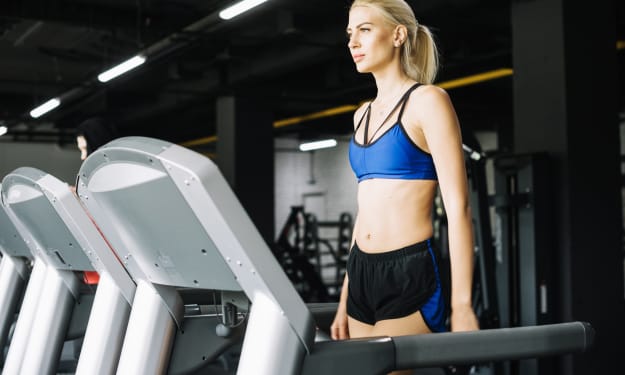How I Found Relief for My Finger Arthritis
By Karen Lopez

I have been suffering from arthritis in my fingers for years. It started with a dull ache in my thumb, then spread to the other fingers. It got worse over time, until I could barely move my fingers without pain. I had trouble with simple tasks like typing, writing, or opening jars. I felt frustrated and helpless.
I tried different treatments, such as medication, supplements, and exercises, but nothing seemed to work. I was afraid that I would have to live with this pain forever, or that I would need surgery to fix my joints.
Then I discovered two things that changed my life: finger braces and red light therapy. They helped me manage my symptoms and improve my quality of life. Here is how they work and what benefits they offer.
Finger Braces
Finger braces are devices that support and stabilize the finger joints. They reduce pain, swelling, and inflammation caused by arthritis. They also prevent further damage to the cartilage and bones by limiting the movement of the affected joints.
There are different types of finger braces available, depending on your needs and preferences. Some of them are:
Trigger finger braces: These are designed to treat a condition called trigger finger, which causes the finger to lock or catch when bending or straightening. Trigger finger is often associated with arthritis or repetitive strain injury. Trigger finger braces immobilize the finger in a straight position to allow it to heal and prevent further irritation.
Finger splints for arthritis: These are specially made for people with arthritis in the fingers. They provide gentle compression and warmth to the joints, which can ease pain and stiffness. They also help maintain proper alignment of the joints and prevent deformities. Some finger splints for arthritis are adjustable, so you can customize the fit and level of support.
Thumb splints: These are similar to finger splints, but they focus on the thumb joint. Thumb arthritis is very common and can affect your ability to grip or pinch objects. Thumb splints support the base of the thumb and limit its movement, which can reduce pain and inflammation. They also help keep the thumb in a natural position and prevent further deterioration of the joint.
Carpal tunnel braces: These are intended for people with carpal tunnel syndrome, a condition that causes numbness, tingling, or weakness in the hand due to compression of a nerve in the wrist. Carpal tunnel syndrome can be caused or worsened by arthritis in the wrist or hand. Carpal tunnel braces wrap around the wrist and keep it in a neutral position, which can relieve pressure on the nerve and improve blood flow to the hand. One type of carpal tunnel brace that uses led lights to treat wrist pain is called led wrist therapy wrap .
Finger and thumb stabilizer braces: These are used for more severe cases of finger or thumb injury, such as sprains or fractures. They have a rigid metal or plastic core that immobilizes the finger or thumb completely, allowing it to heal properly. They also protect the injured area from further trauma or infection.
You can find various models of finger braces online or at your local pharmacy or medical supply store. You can also consult your doctor or physical therapist for advice on which type of finger brace is best for you.
How to use finger braces?
Finger braces are easy to use and usually come with instructions on how to wear them correctly. Here are some general tips on how to use finger braces:
Choose the right size and fit: Make sure you measure your finger or thumb before buying a finger brace. The brace should fit snugly but not too tightly around your joint. It should not cut off your circulation or cause discomfort. You should be able to move your other fingers normally while wearing the brace.
Wear it as directed: Follow the instructions on how long and how often you should wear your finger brace. Some braces are meant for daytime use only, while others can be worn at night as well. Some braces may require you to take them off periodically to allow your skin to breathe and prevent irritation or infection.
Clean it regularly: Keep your finger brace clean by washing it with mild soap and water as needed. Dry it thoroughly before putting it back on. Do not use harsh chemicals or bleach on your brace, as they may damage it or cause allergic reactions.
Replace it when necessary: Check your finger brace regularly for signs of wear and tear, such as cracks, holes, or loose stitches. If your brace is damaged or no longer fits properly, replace it with a new one.
What are the benefits of finger braces?
Finger braces can offer several benefits for people with arthritis in the fingers, such as:
Reducing pain: Finger braces can help relieve pain by providing support and stability to the affected joints. They can also reduce inflammation by applying gentle pressure and warmth to the area.
Improving function: Finger braces can help improve your finger function by allowing you to perform daily activities with less difficulty and discomfort. They can also prevent further damage to the joints by limiting their movement and keeping them in a healthy position.
Preventing complications: Finger braces can help prevent complications from arthritis, such as deformities, infections, or nerve damage. They can also reduce the risk of developing other conditions, such as trigger finger or carpal tunnel syndrome, by protecting your fingers from overuse or injury.
What is red light therapy?

Red light therapy is a type of phototherapy that uses low-level red or near-infrared light to stimulate cellular processes and promote healing. Red light therapy can penetrate deep into the tissues and affect various biological functions, such as:
Increasing blood flow: Red light therapy increases blood flow to the treated area by dilating the blood vessels and increasing the production of nitric oxide, a molecule that relaxes the smooth muscle cells in the vessel walls. This improves oxygen and nutrient delivery to the cells and removes waste products more efficiently.
Reducing inflammation: Red light therapy reduces inflammation by modulating the activity of immune cells and cytokines, which are molecules that mediate inflammation. This decreases swelling, pain, and tissue damage caused by inflammation.
Enhancing collagen synthesis: Red light therapy enhances collagen synthesis by stimulating the fibroblasts, which are cells that produce collagen, a protein that provides structure and strength to the tissues. This improves the quality and elasticity of the skin, tendons, ligaments, and cartilage.
Boosting mitochondrial function: Red light therapy boosts mitochondrial function by increasing the production of adenosine triphosphate (ATP), which is the main source of energy for the cells. This improves cellular metabolism and repair and prevents oxidative stress and damage.
How to use red light therapy?
Red light therapy is usually administered by a device that emits red or near-infrared light at a specific wavelength and intensity. The device can be handheld or mounted on a stand or panel. I bought a red light therapy device online after doing some research on the best models for arthritis.
To use red light therapy, I follow these steps:
Choose the right device: I chose a device that has a wavelength between 600 nm and 900 nm, which is the optimal range for red light therapy. The device also has an intensity between 10 mW/cm2 and 100 mW/cm2, which is the safe and effective range for red light therapy. One of the devices I use is called red light therapy devices for pain .
Prepare the area: I cleanse and dry the area I want to treat with red light therapy. I remove any clothing, jewelry, or makeup that may interfere with the light penetration. I also apply a moisturizer or serum to enhance the effects of red light therapy.
Position the device: I position the device close to my skin, about 6 inches away from the area I want to treat. I make sure the device covers the entire area evenly and does not cause any discomfort or heat sensation.
Turn on the device: I turn on the device and expose my skin to the red light for about 10 to 20 minutes per session. I do this once or twice a day, depending on my condition and goals. I do not feel any pain or discomfort during or after the session. If I do, I stop using the device immediately and consult my doctor.
Turn off the device: I turn off the device after completing my session and store it in a cool and dry place. I notice some immediate effects after using red light therapy, such as improved skin tone, reduced pain, or increased energy. However, I need several sessions to see significant results.
The Results
Finger braces and red light therapy have helped me manage my arthritis symptoms and improve my quality of life. They have reduced my pain, improved my joint health, and relieved my swelling and stiffness. They have also prevented complications from arthritis, such as deformities, infections, or nerve damage.
I can now use my fingers with less difficulty and discomfort. I can type, write, or open jars without pain. I feel more confident and happy with my fingers. I am grateful that I found these two methods that work for me.
Of course, they are not a cure for arthritis. They are not a substitute for medical advice or treatment. They are not a one-size-fits-all solution. They may not work for everyone or for every type of arthritis. They may have some drawbacks or side effects that you need to be aware of.
But they are worth a try if you have arthritis in your fingers and you are looking for some relief. They are simple and easy to use, natural and holistic, and safe and effective. They may make a difference in your life, as they did in mine.
If you have tried finger braces or red light therapy for your arthritis in the fingers, I would love to hear from you. Please share your experience in the comments below.
Thank you for reading my story. I hope you found it helpful and informative. If you liked it, please share it with your friends and family who may benefit from it. Also, don’t forget to subscribe to our newsletter for more stories like this one.
I wish you all the best in your journey to better health and wellness. Stay tuned for more updates from me soon!
About the Creator
HealPoint
Get ready for an explosion of transformative insights and skyrocket your well-being journey!
Enjoyed the story? Support the Creator.
Subscribe for free to receive all their stories in your feed. You could also pledge your support or give them a one-off tip, letting them know you appreciate their work.






Comments
There are no comments for this story
Be the first to respond and start the conversation.